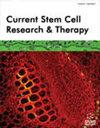HucMSCs-derived Exosomes Protect Against 6-hydroxydopamine-induced Parkinson’s Disease in Rats by Inhibiting Caspase-3 Expression and Suppressing Apoptosis
IF 2.1
4区 医学
Q4 CELL & TISSUE ENGINEERING
引用次数: 0
Abstract
Objective: Parkinson’s disease (PD) is a progressive neurodegenerative disorder with symptoms including tremor and bradykinesia, while traditional dopamine replacement therapy and hypothalamic deep brain stimulation can temporarily relieve patients’ symptoms, they cannot cure the disease. Hence, discovering new methods is crucial to designing more effective therapeutic approaches to address the condition. In our previous study, we found that exosomes (Exos) derived from human umbilical cord mesenchymal stem cells (hucMSCs) repaired a PD model by inducing dopaminergic neuron autophagy and inhibiting microglia. However, it is not clear whether its therapeutic effect is related to inhibiting apoptosis by inhibiting caspase-3 expression. Methods: Three intervention schemes were used concerning previous literature, and the dosage of each scheme is the same, with different dosing intervals and treatment courses and to compare the aspects of behavior, histomorphology, and biochemical indexes. To predict and determine target gene enrichment, high-throughput sequencing and miRNA expression profiling of exosomes, GO and KEGG analysis, and Western blot were used. Results: Exos labeled with PKH67 were found to reach the substantia nigra through the blood- -brain barrier and existed in the liver and spleen. 6-hydroxydopamine (6-OHDA) induced PD rats were treated with Exos every two days for one month, which alleviated the asymmetric rotation induced by morphine, reduced the loss of dopaminergic neurons in the substantia nigra, and increased dopamine levels in the striatum. The effect became more significant as the treatment time was extended to two months. These results suggest that hucMSCs-Exos can inhibit the 6-OHDA- induced neuron damage in PD rats, and its neuroprotective effects may be mediated by inhibiting cell apoptosis. Through high-throughput sequencing of miRNA, potential targets for Exos to inhibit apoptosis may be BAD, IKBKB, TRAF2, BCL2, and CYCS. Conclusion: The above results indicate that hucMSCs-Exos can inhibit 6-OHDA-induced damage in PD rats, and its neuroprotective effect may be mediated by inhibiting cell apoptosis.来源于 HucMSCs 的外泌体通过抑制 Caspase-3 表达和抑制细胞凋亡保护大鼠免受 6-羟基多巴胺诱发的帕金森病的影响
目的:帕金森病(Parkinson's disease,PD)是一种进行性神经退行性疾病,症状包括震颤和运动迟缓,传统的多巴胺替代疗法和下丘脑深部刺激疗法虽然能暂时缓解患者的症状,但无法根治疾病。因此,发现新的方法对于设计更有效的治疗方法来治疗该疾病至关重要。在我们之前的研究中,我们发现从人脐带间充质干细胞(hucMSCs)中提取的外泌体(Exos)可通过诱导多巴胺能神经元自噬和抑制小胶质细胞来修复帕金森病模型。然而,尚不清楚其治疗效果是否与通过抑制caspase-3表达来抑制细胞凋亡有关。研究方法参考以往文献,采用三种干预方案,每种方案的剂量相同,用药间隔和疗程不同,并对行为学、组织形态学和生化指标等方面进行比较。为了预测和确定靶基因的富集,采用了高通量测序和外泌体 miRNA 表达谱分析、GO 和 KEGG 分析以及 Western 印迹。结果显示发现标记有PKH67的外泌体通过血脑屏障到达黑质,并存在于肝脏和脾脏中。用Exos治疗6-羟基多巴胺(6-OHDA)诱导的帕金森病大鼠,每两天一次,连续治疗一个月,可以缓解吗啡诱导的不对称旋转,减少黑质中多巴胺能神经元的丢失,增加纹状体中的多巴胺水平。随着治疗时间延长至两个月,效果变得更加明显。这些结果表明,hucMSCs-Exos能抑制6-OHDA诱导的帕金森病大鼠神经元损伤,其神经保护作用可能是通过抑制细胞凋亡介导的。通过高通量 miRNA 测序,Exos 抑制细胞凋亡的潜在靶点可能是 BAD、IKBKB、TRAF2、BCL2 和 CYCS。结论上述结果表明,hucMSCs-Exos可抑制6-OHDA诱导的帕金森病大鼠损伤,其神经保护作用可能是通过抑制细胞凋亡介导的。
本文章由计算机程序翻译,如有差异,请以英文原文为准。
求助全文
约1分钟内获得全文
求助全文
来源期刊

Current stem cell research & therapy
CELL & TISSUE ENGINEERING-CELL BIOLOGY
CiteScore
4.20
自引率
3.70%
发文量
197
审稿时长
>12 weeks
期刊介绍:
Current Stem Cell Research & Therapy publishes high quality frontier reviews, drug clinical trial studies and guest edited issues on all aspects of basic research on stem cells and their uses in clinical therapy. The journal is essential reading for all researchers and clinicians involved in stem cells research.
 求助内容:
求助内容: 应助结果提醒方式:
应助结果提醒方式:


